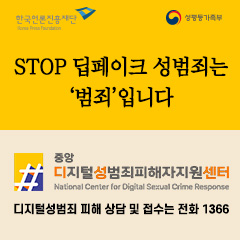
Looking at the proportion of multicultural students since 2012 when the multicultural student survey began, it has been found that the proportion has been increasing every year.
According to the 2021 education statistics analysis data from the Ministry of Education and the Korea Education Development Institute, the number of multicultural students in Korea last year was 160,058, which is about 3.4 times the number 46,954 in 2012.
The number of students from international marriage families born between Koreans and foreign parents tripled to 131,522 over the past nine years, and the number of students from foreign families born among foreign parents increased 11 times to 28,536. The proportion of multicultural students is the highest at with 4.2% in elementary schools.
In high school, the proportion of multicultural students increased by 1% for the first time to 1.1%. It jumped 5.5 times from 2012.
As of last year's elementary school, the proportion of multicultural students increased toward large cities (3.4%), small and medium-sized cities (3.5%), towns and villages (7.2%), and islands (11.1%).
Looking at the change in the proportion of multicultural students by parent country, Japan, which accounted for the highest percentage of 27.5% in 2012, plunged to 5.2% in 2021, and Vietnam, which was 7.3% in 2012, increased rapidly to 32.2% in 2021. In addition, multicultural families from Chinese parents increased 7.2%p from 16.4% in 2012 to 23.6% in 2021.
Looking at the ratio of multicultural students by parent country by region, multicultural students from Vietnam, the largest number of parents, were found to be the highest with 50.0% in Gyeongsangbuk-do, and were also found to be high in Gyeongnam (48.4%), Jeonnam (44.7%), and Jeonbuk (41.8%).
Incheon had the largest number of multicultural students whose parents were from China with 33.5%, Gyeonggi-do with 32.9% and Seoul with 32.2%, showing high rate in metropolitan area, and it is shown rather low in Jeonnam with 12.0%, Gangwon with 14.0%, and Gyeongnam with 14.8%.
Through this, it can be seen that there is a clear distribution trend by region depending on the country of parents' origin, and multicultural students whose parents are from China are mainly distributed in the metropolitan area and large cities, and multicultural students from Vietnam are mainly distributed in Yeongnam and Honam.
Some pointed out that policy support is needed as the rapidly increasing number of multicultural students still face many difficulties inside and outside the school.
Shin Yoon-jung, a researcher at the Korea Institute for Health and Social Affairs, suggested, "Children with Korean nationality need support to overcome social discrimination caused by immigration background and vulnerabilities caused by family background, and supports for childeren without Korean nationality should be strengthened through childcare support and after-school learning."
(한국어 번역)
한국다문화뉴스=김가원 기자ㅣ 다문화 학생 조사가 시작된 2012년 이후부터 다문화 학생 비율을 살펴보면 매년 비율이 증가하고 있는 것으로 나타났다.
교육부와 한국교육개발원의 2021 교육통계 분석자료를 보면 지난해 국내 다문화 학생 수는 16만58명으로, 2012년 4만6천954명의 3.4배로 늘어났다.
한국인과 외국인 부모 사이에서 태어난 국제결혼 가정 학생은 13만1천522명으로 지난 9년 사이 3배 늘었고, 외국인 부모 사이에서 출생한 외국인 가정 학생은 2만8천536명으로 11배 증가했다. 다문화학생 비율은 초등학교에서 4.2%로 가장 높다.
고등학교에서도 다문화학생 비율은 1.1%로 처음 1% 늘어났다. 2012년보다는 5.5배 급등한 것이다.
작년 초등학교 기준으로 대도시(3.4%)와 중소도시(3.5%), 읍·면지역(7.2%), 도서벽지(11.1%)로 갈수록 다문화 학생의 비율이 높아졌다.
부모출신국별 다문화 학생 비율 변화를 살펴보면, 2012년 27.5%로 가장 높은 비율을 차지했던 일본은 2021년 5.2%로 그 비중이 급감하였으며, 2012년 7.3%였던 베트남은 빠른 속도로 증가해 2021년 32.2%로 가장 높은 비율을 차지하였다.
또한, 중국 부모 출신 다문화가정은 2012년 16.4%에서 2021년 23.6%로 7.2%p 증가하였다.
부모출신국별 다문화 학생 비율을 지역별로 살펴보면, 가장 많은 부모출신국인 베트남 출신인 다문화 학생은 경북이 50.0%로 가장 높았고, 경남(48.4%), 전남(44.7%), 전북(41.8%) 등 에서도 높게 나타났다.
부모가 중국 출신인 다문화 학생은 인천이 33.5%로 가장 많았고 경기 32.9%, 서울 32.2%로 수도권에 많이 분포하고 있었으며, 전남 12.0%, 강원 14.0%, 경남 14.8%에서는 낮게 나타났다.
이를 통해 부모출신국에 따라 지역별 분포 경향이 뚜렷한 것을 알 수 있는데, 부모가 중국 출신인 다문화 학생은 수도권과 대도시에 주로 분포하며, 부모가 베트남 출신인 다문화 학생은 영남권과 호남권에 주로 분포하고 있는 것을 알 수 있다.
급증하고 있는 다문화 학생들이 학교 안팎에서 겪는 어려움이 여전히 많은 만큼 정책적 지원이 필요하다는 지적도 나왔다.
신윤정 한국보건사회연구원 연구위원은 "한국 국적을 가진 아동에게는 이주 배경이라는 사회적 차별과 가족 배경에 따른 취약성을 극복할 수 있도록 지원이 필요하며, 한국 국적을 가지고 있지 못한 아동들에 대해서는 건강한 발달을 위한 양육지원 서비스와 돌봄·방과 후 학습을 통한 지원을 강화해야 한다"고 제안했다.





















